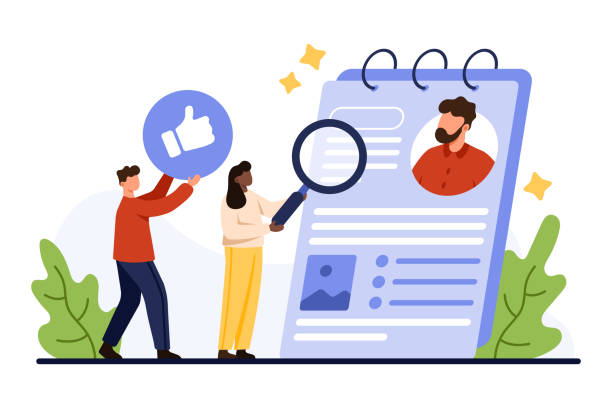Introduction and Importance of E-commerce Website Design in the Digital Age
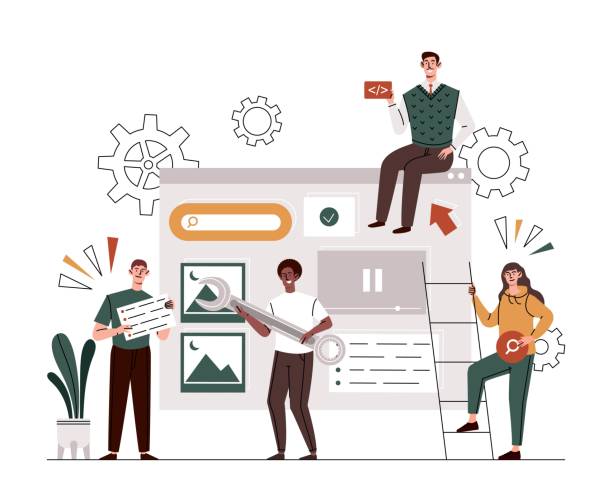
In today’s fast-paced world, an online presence is not just an advantage for every business, but an undeniable necessity.
Meanwhile, e-commerce website design plays a pivotal role and acts as a gateway to the vast world of e-commerce.
The importance of e-commerce has increased to such an extent that it’s no longer possible to compete in the market without an online sales platform.
This article is an #educational and #guidance approach for all enthusiasts and businesses who intend to enter the world of online sales.
The goal of this guide is to provide comprehensive and practical information to help you in building a powerful and efficient online store.
With increased internet access and changing consumer buying habits, unparalleled opportunities have been created for businesses considering e-commerce website design.
This trend has gained more momentum, especially in Iran, due to the expansion of internet infrastructure and the growth of online shopping culture.
An online store not only eliminates geographical limitations but also provides 24-hour access to your products.
This means your business is always open, and customers can make purchases from you anytime and anywhere.
This feature alone significantly increases the potential for sales growth and market expansion.
Therefore, investing in designing a professional and optimized online store website is considered a vital step towards the long-term success of any business.
Are you dissatisfied with the low conversion rate of visitors to customers on your online store?
With professional online store design by Rasaweb, solve this problem forever!
✅ Increase visitor-to-customer conversion rate
✅ Create an excellent user experience and build customer trust
⚡ Get free consultation
Initial Steps for Designing a Successful E-commerce Website
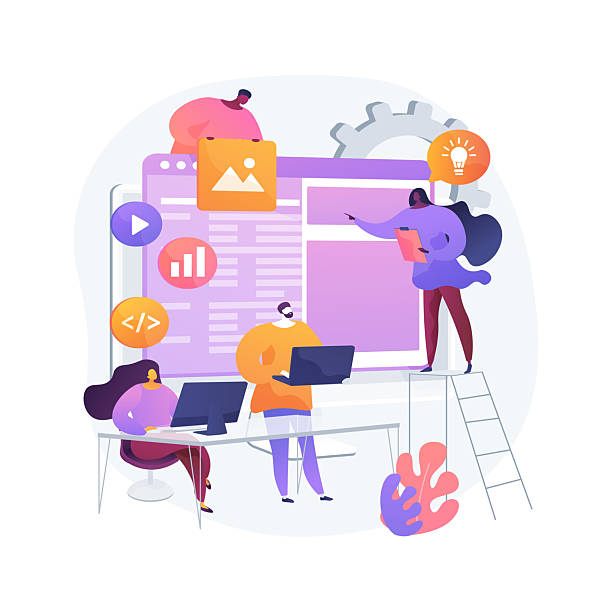
Starting the process of online store design requires precise planning and specific steps to avoid confusion and define a clear path to achieve goals.
The first step is defining business goals and identifying the target audience.
What products do you want to sell? Who are your ideal customers, and what are their needs? Answering these questions helps you choose the right platform and design engaging content.
The next step is choosing the right platform for building your online store.
There are numerous options, including open-source content management systems like WooCommerce (for WordPress) and PrestaShop, to SaaS platforms like Shopify and Squarespace.
Each of these platforms has its own advantages and disadvantages, and their selection depends on your budget, technical needs, and desired level of control.
For example, WooCommerce offers high flexibility and is suitable for those who want full control over their code and server, while Shopify provides simplicity and speed for setup but may have limitations in deep customizations.
After choosing the platform, it’s time to design the site structure and determine product categories.
A well-organized and logical structure helps users easily find their desired products and have an enjoyable shopping experience.
Finally, choosing a host and domain is also one of the initial and crucial steps in online store design, which directly affects your website’s speed and security.
These steps are a key #guide for correctly starting your path in designing an efficient online store.
Key Considerations in User Experience (UX) and User Interface (UI) Design for Online Stores

One of the most important success factors in online store design is focusing on user experience (UX) and user interface (UI).
A good UI/UX design not only has visual appeal but also provides ease of use for customers and guides them towards completing a purchase.
This section addresses this topic #expertly.
Ease of navigation is one of the basic principles.
Customers should be able to easily navigate between different pages of your store, find products, add them to the cart, and complete the checkout process without any obstacles.
Clear menus, powerful search, and logical product categories are key elements in this area.
Design responsiveness (Responsive Design) is also crucial.
Given the increased use of mobile for online shopping, your online store should display and function well across all devices, from desktops to tablets and mobiles.
A responsive design ensures a seamless user experience and prevents mobile users from leaving the site.
Site loading speed is also an important factor.
Slow websites have a higher bounce rate and directly impact sales.
Image optimization, using caching, and choosing a suitable hosting provider are among the actions that help increase site speed.
In addition, an attractive and visual user interface, utilizing high-quality images, readable fonts, and appropriate color schemes, can create a sense of trust and professionalism in customers and encourage them to purchase from your online store.
Below is a table of important elements in UX/UI design and their impact:
| UX/UI Element | Impact on User | Practical Example in Online Store Design |
|---|---|---|
| Easy Navigation | Reduced confusion, quick product finding | Clear dropdown menus, powerful search bar |
| Responsiveness | Seamless experience on mobile and desktop | Automatic adjustment of page layout based on screen size |
| Fast Loading Speed | Reduced bounce rate, improved user satisfaction | Image optimization, use of CDN |
| Attractive Visual Design | Increased trust, creation of professional impression | High-quality images, harmonious color palette |
Search Engine Optimization (SEO) to Increase Online Store Traffic
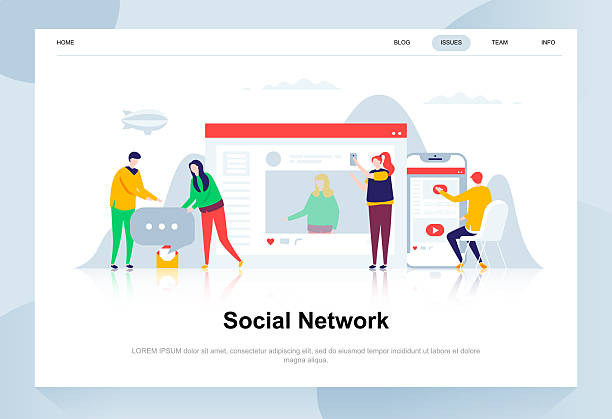
After completing online store design, the next crucial step is ensuring its visibility.
This is where Search Engine Optimization (SEO) comes into play.
SEO for online stores means optimizing your website for higher rankings in Google and other search engine results, which in turn leads to increased organic traffic and ultimately increased sales.
This section provides a detailed #explanation about SEO.
Keyword research is the first and most important step.
You need to identify keywords that your potential customers enter into search engines to find products similar to what you offer.
Tools like Google Keyword Planner can help you in this process.
After identifying keywords, you should strategically use them on product pages, descriptions, titles, and meta tags of your site.
On-Page SEO includes optimizing titles (Title Tags), meta descriptions (Meta Descriptions), heading tags (H1, H2, H3), product page content, and images.
Make sure that your product descriptions are unique, comprehensive, and engaging, and include relevant keywords.
Using optimized images (with appropriate Alt tags) is also very important.
Off-Page SEO also includes activities outside your site, such as building quality links (Link Building) from other reputable websites to your store.
These links show search engines that your site is authoritative and credible.
Besides these, site speed optimization (as mentioned earlier) and mobile compatibility are also important SEO factors.
Google gives higher rankings to sites that provide a good mobile user experience.
Finally, designing an online store website following SEO principles from the very beginning can reduce your marketing costs in the long run and drive targeted, high-quality traffic to your store.
Does your company’s website perform as it deserves for your brand? In today’s competitive world, your website is your most important online tool. Rasaweb, a specialist in professional corporate website design, helps you to:
✅ Build customer credibility and trust
✅ Convert website visitors into customers
⚡ Get a free consultation!
Security and Online Payments in Online Store Design
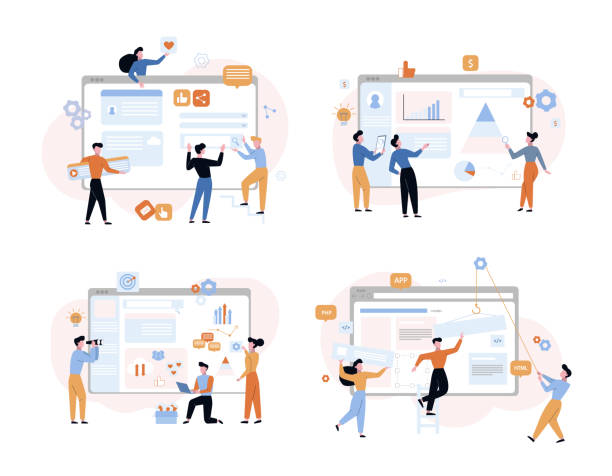
One of the biggest concerns for customers when shopping online is the issue of security of their personal and financial information.
Therefore, in online store design, ensuring security must be a top priority.
This section addresses the importance of this topic in a #news and #analytical manner.
Using an SSL certificate (Secure Sockets Layer) is the first step and one of the most essential security measures.
SSL encrypts information between the user’s browser and your website server and prevents the theft of sensitive information such as credit card numbers or passwords.
The presence of an HTTPS address in the browser’s address bar and a green lock icon assures users that your site is secure.
Online payment gateways must also be reputable and secure.
Choosing a well-known payment gateway approved by the Central Bank or Shaparak in Iran is essential for Iranian online stores.
These gateways not only ensure secure transactions but also make the payment process simple and reliable for customers.
Compliance with data protection regulations and customer privacy is also very important.
Transparency regarding the collection, storage, and use of customer information helps build trust.
A clear and accessible privacy policy must be present on your online store.
Furthermore, regular updating of systems and plugins (especially in open-source platforms like WooCommerce) to counter new security vulnerabilities is crucial.
Installing a firewall (WAF) and using security monitoring tools can also provide an additional layer of protection for your online store.
Investing in security not only protects your and your customers’ information but also enhances the reputation and credibility of your e-commerce website and builds customer trust, which is a key factor in increasing sales.
Content and Marketing for Customer Acquisition in Online Stores
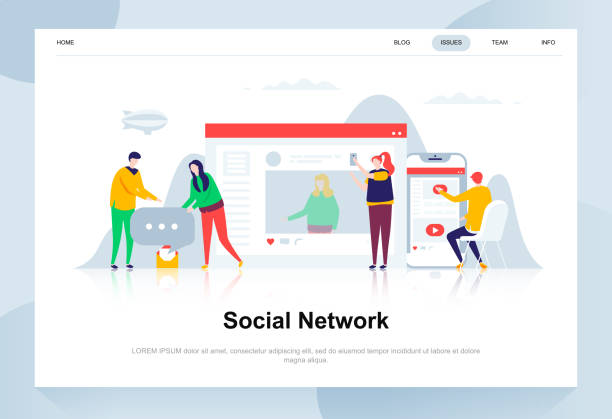
After your online store design is complete and its security is ensured, it’s time for the crucial stage of customer acquisition and sales.
This section addresses in a #thought-provoking manner how engaging content and proper marketing strategies can help you achieve this goal.
Quality product content is the heart of any online store.
Product descriptions should be comprehensive, accurate, and compelling.
Simply listing features is not enough; you should address the product’s benefits for the customer and how it solves their problems.
Using high-quality images and videos from various angles of the product builds customer trust and helps them make decisions.
Do your product descriptions encourage customers to buy, or do they just provide dry information? Blogging is a powerful strategy for attracting organic traffic and building credibility.
Blog articles can be about tips for using products, buying guides, industry news, or even stories related to your business.
This not only helps with SEO but also establishes you as an authority in your field.
How can you create content that users will share and engage with? Social media marketing and email marketing are also important marketing tools.
Active presence on platforms such as Instagram, Telegram, and LinkedIn (depending on the product type and audience) can help increase brand awareness and drive traffic to your online store.
Email marketing is also very effective for informing about new products, discounts, and special offers and has a high return on investment (ROI).
Are your email campaigns personalized and do they offer real value to the customer? Finally, user-generated content (UGC) creation, such as customer reviews and testimonials, can bring immense credibility to your e-commerce website.
Encouraging customers to share their experiences is one of the best word-of-mouth marketing methods.
How can you encourage your customers to create this type of content?
Product and Order Management and Customer Support
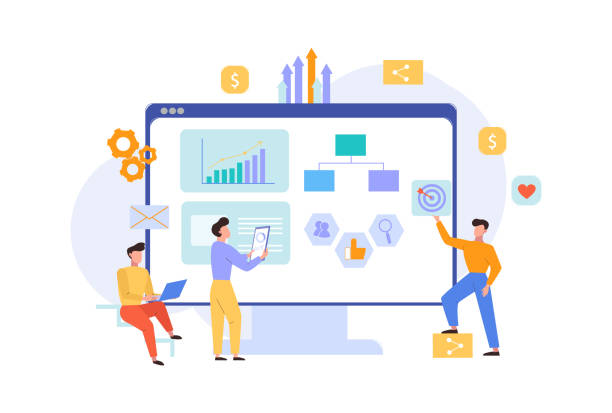
After succeeding in online store design and customer acquisition, the next challenge is efficient management of internal operations.
This section #analytically addresses post-sales processes that are crucial for customer retention and business growth.
Inventory Management is one of the most important aspects.
Ensuring that inventory information in your online store is accurate and up-to-date prevents selling out-of-stock products and customer dissatisfaction.
Using automated inventory management systems that integrate with your online store design platform can be very helpful in this regard.
Order processing and shipping, on-time and accurate, play a significant role in customer experience.
Creating an efficient system for packaging, labeling, and coordinating with shipping companies is essential for a successful online store.
Providing tracking information to customers also increases their trust.
But perhaps the most important post-sales aspect is Customer Support.
Customers may have questions about products, problems during the purchase process, or need help after purchase.
Providing multiple communication channels and fast and professional responsiveness can increase customer loyalty and turn them into loyal customers.
Using CRM systems (Customer Relationship Management) can help you track customer interactions, resolve issues faster, and provide personalized services.
Support includes online chat, phone, email, and a Frequently Asked Questions (FAQ) section.
The more communication channels you provide and the faster your response time, the higher customer satisfaction will be.
These aspects are as influential in the long-term success of your e-commerce business as designing a beautiful and user-friendly online store.
Below is a table of customer support tools and their advantages:
| Support Tool | Advantages | Key Implementation Notes |
|---|---|---|
| Online Chat | Instant response, increased conversion rate | 24/7 support or specific business hours, canned responses |
| Phone Support | More personal communication, solving complex issues | Dedicated phone line, trained staff |
| Email Support | Documenting conversations, easy follow-up | Ticketing system, response within a specified timeframe |
| Frequently Asked Questions (FAQ) Section | Reduced repetitive inquiries, customer self-service | Comprehensiveness, regular updates |
Reporting and Data Analysis for Online Store Growth

After launching and daily management of your online store, the next stage is performance analysis and continuous optimization.
This section addresses the importance of data in your business growth in an #analytical and #engaging (in terms of discovering new insights) manner.
Tools like Google Analytics provide invaluable information about website visitors, their behavior, conversion rates, traffic sources, and much more.
By analyzing this data, you can identify the strengths and weaknesses of your online store and make more informed decisions for its improvement.
For example, by examining the bounce rate on different pages, you can realize which pages need content or design improvement.
Observing user flow on the site helps you to identify and resolve potential obstacles in the purchase process.
Conversion Tracking is one of the most important aspects of data analysis in online store design.
This allows you to know exactly what percentage of visitors convert to customers and which traffic sources (e.g., Google ads, social media, or organic search) bring you the most sales.
This information is vital for optimizing marketing budget and focusing on more effective channels.
Also, analyzing sales data helps you to understand customer buying patterns, identify best-selling products, and adjust your inventory strategies based on demand.
By using A/B Testing tools, you can make small changes to your online store (such as the color of the buy button, product page layout) and measure their impact on the conversion rate.
This data-driven approach allows you to continuously improve your e-commerce website and maximize its efficiency.
In fact, data analysis is the key to sustainable growth and reaching the full potential of your online store.
Did you know that your company’s website is the first point of contact for 75% of potential customers?
Your website is the face of your brand. With **Rasaweb**’s corporate website design services, build an online presence that gains customer trust.
✅ Create a professional and lasting image of your brand
✅ Attract target customers and increase online credibility
⚡ Get free consultation from **Rasaweb** experts!
Common Mistakes in Online Store Design and Management and Their Solutions

In the process of online store design and management, you may encounter common challenges and mistakes that can negatively impact your business performance.
This section provides #guidance on these mistakes and offers practical solutions to prevent or rectify them.
One of the most common mistakes is neglecting user experience (UX).
A beautiful but difficult-to-use website quickly drives customers away.
The solution is to always put yourself in the customer’s shoes.
Is the purchasing process simple? Is product information easily accessible? Regular user testing with real people can reveal weaknesses.
Another mistake is not optimizing the website for mobile.
In today’s world, a large portion of traffic and purchases occur via mobile.
Lack of mobile compatibility means losing a vast number of potential customers.
The solution is to use responsive design from the very beginning of online store design, which ensures the site displays correctly on all devices.
Neglecting SEO is also a big mistake.
If your site is not visible in search engines, your organic traffic will be low.
The solution is investing in keyword research, content optimization, and link building.
Producing low-quality or insufficient content can also harm your sales.
Comprehensive product descriptions, high-quality images, and engaging blog content are essential for attracting and retaining customers.
Lacking a marketing strategy after launching an online store is also a common mistake.
Online store design is just the beginning; you need a well-defined plan for marketing through social media, email marketing, and advertising.
Finally, poor customer support can damage your reputation.
Fast, professional, and efficient responsiveness to customer questions and problems is the key to their loyalty.
By being aware of these mistakes and implementing appropriate solutions, you can pave the way for the success of your e-commerce website.
The Future of Online Store Design and Innovations
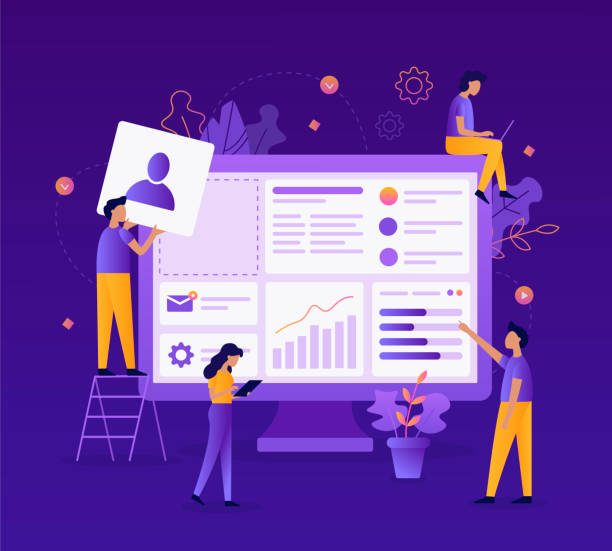
The world of online store design and e-commerce is rapidly evolving, and new innovations emerge every day.
This section addresses future trends and technologies in a #news and #analytical manner that will reshape online stores in the coming years.
Artificial Intelligence (AI) and Machine Learning (ML) play an increasing role in personalizing the shopping experience.
From recommendation engines that suggest relevant products to customers to AI-powered chatbots that offer 24-hour support, AI is becoming an integral component of e-commerce websites.
These technologies help businesses increase their sales by better understanding customer behavior.
Augmented Reality (AR) and Virtual Reality (VR) are also changing how customers interact with products.
Imagine customers being able to virtually try out furniture in their homes before purchasing or try on clothes on a virtual model.
These technologies drive the online shopping experience towards greater realism and reduce product return rates.
Voice Search and Voice Commerce are also growing.
With the expansion of voice assistants like Siri and Google Assistant, optimizing online store design for voice searches is gaining increasing importance.
This means focusing on long-tail and natural keywords that people use when speaking.
Social Commerce, i.e., direct shopping from social media platforms, is another trend to pay attention to.
Integrating shopping features on Instagram, Facebook, and other platforms makes the purchasing process easier for users.
Finally, sustainability and social responsibility will also play a role in future online store design.
Customers are increasingly drawn to brands that uphold ethical and environmental values.
Designing an online store that reflects these values can be effective in attracting a new generation of customers.
The future is bright, and by following these innovations, you can prepare your online store for the years to come.
Frequently Asked Questions
| Question | Answer |
|---|---|
| What is an online store? | A website that enables online buying and selling of goods or services. |
| What are the main features of a good online store? | Easy user interface, product categorization, shopping cart, secure payment gateway, search and filter capabilities. |
| What are the common platforms for designing an online store? | WordPress (WooCommerce), Shopify, Magento, PrestaShop, etc. |
| Why is it important for an online store to be responsive? | For correct display on various devices (mobile, tablet, desktop) and to improve user experience and SEO. |
| What are the benefits of having an online store? | 24/7 customer access, reduced operational costs, access to a wider market, customer data collection. |
And other services of Rasaweb Advertising Agency in the field of advertising
How to use analytical tools to improve advertising
Creating advertising campaigns for medical startups
The role of multilingual content in attracting global investors
Advertising on medical affiliate websites
How to use location-based ads
And over a hundred other services in the field of online advertising, advertising consulting, and organizational solutions
Online Advertising | Advertising Strategy | Advertorial
🚀 Are you ready to transform your business in the digital world? Rasaweb Afarin Digital Marketing Agency, by providing comprehensive services including custom website design, professional SEO, and social media management, paves your path to growth and success. With us, have a powerful and lasting online presence.
📍 Tehran, Mirdamad Street, next to Central Bank, Southern Kazeroon Alley, Ramin Alley, No. 6

